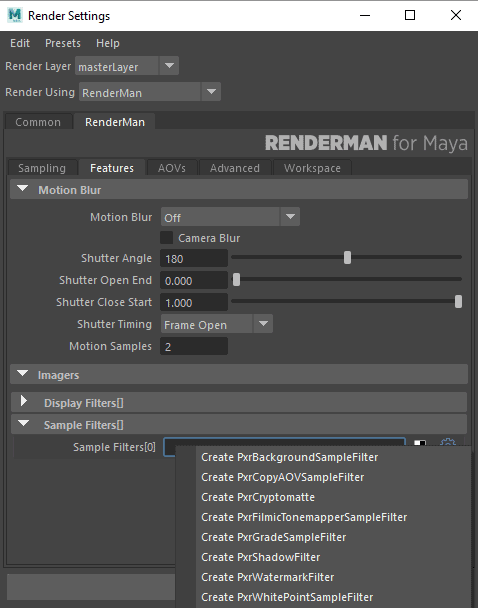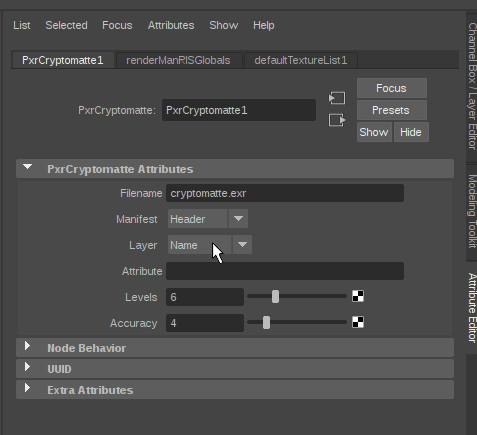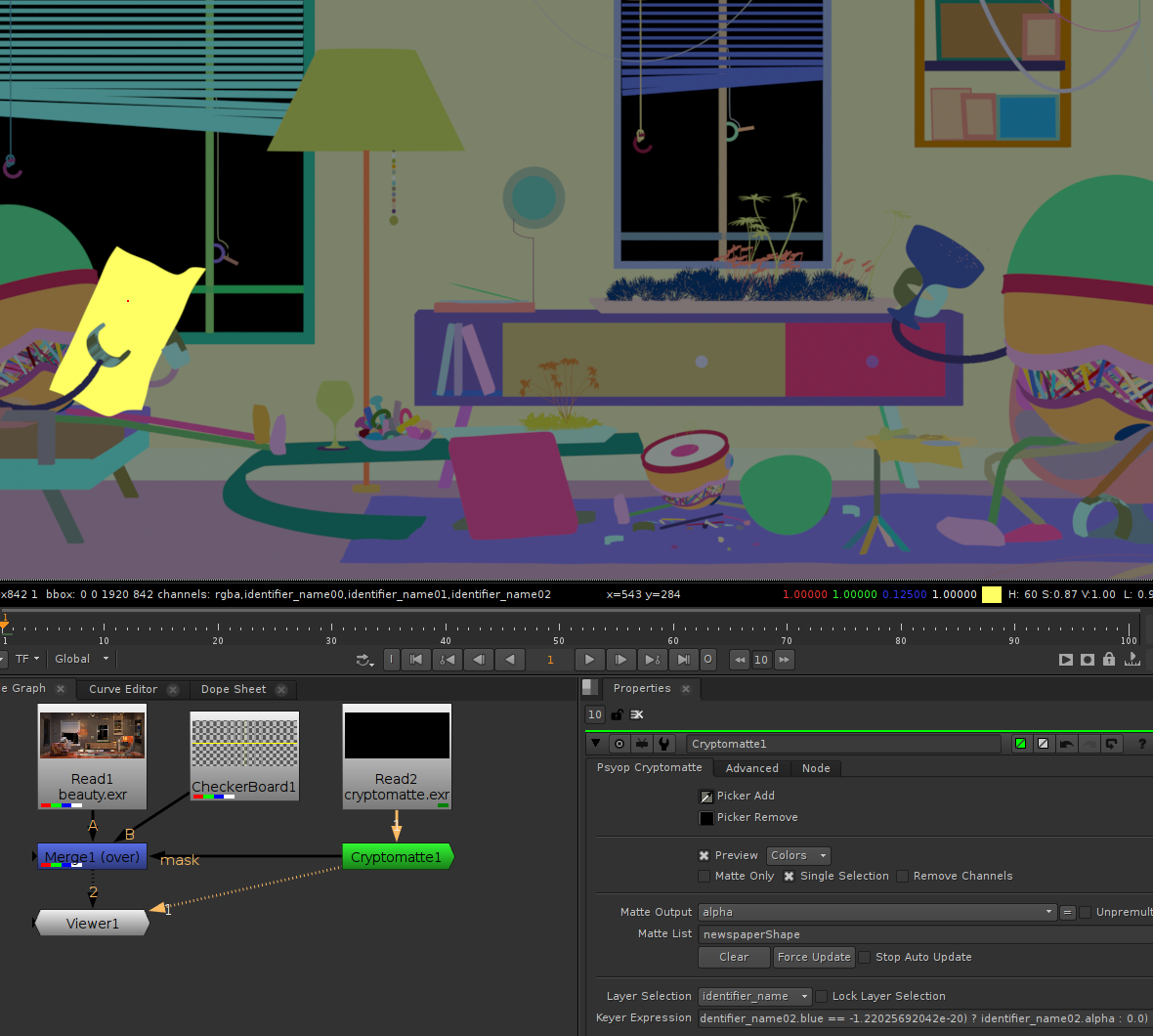
Using PxrCryptomatte workflow, you can output IDs in Maya for easy selection in a compositing application. You can then use that selection as a mask to make changes selectively in post packages.
PxrCryptomatte is supplied as a Sample Filter plugin. As such the output for Cryptomatte is stored as a separate EXR file from your beauty or denoise outputs. Please note an OpenEXR is required to store the values correctly.

Under the Features Tab of the RenderSettings, create a PxrCryptomatte

The options above are default. You can find out more about the options by visiting the PxrCryptomatte page.
Note that after you create a Sample Filter, another empty connection will be created, allowing you to output Cryptomatte files using different criteria. For example, if you wanted one for per-object and another per-material, create another PxrCryptomatte for output and specify another name for the file.
For now, a separate OpenEXR is required to be output for each plugin, separate from your denoise or beauty EXRs. You can create a sequence by using the correct token, example: cryptomatte.<f4>.exr creates a rendered sequence with a padding of 4 spaces, cryptomatte.0001.exr
Below is an example in Nuke using our Robot Room Community Scene.

You can set a user string attribute in multiple ways if you want to assign an ID to geometry. Examples are as follows:
You could use a pre-assigned LPE group if you wanted those to match
Tell Cryptomatte you want to use: identifier:lpegroup
When choosing identifier:name it will return the instance (transform)
When choosing identifier:object it will return the leaf level shape node.